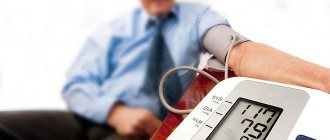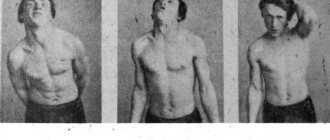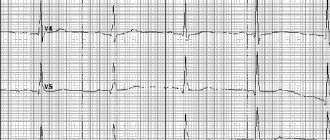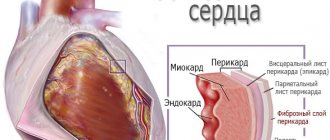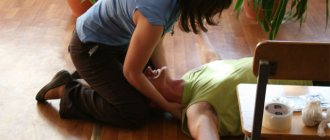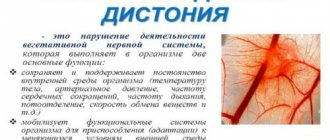Kinds
The etiology and various manifestations of the disease suggest different types of muscular dystonia. Its course is influenced by the causes, the age at which the first signs appeared, the area of the lesion, and the features of the manifestation.
Development factors
Genetic predisposition causes the occurrence of primary (idiopathic) dystonia. It is already detected in infants. At least in the initial stages of the disease, dystonia is not associated with damage to other organs.
Secondary dystonia occurs as a consequence of other diseases, intoxication, and medication.
Age of onset of symptoms
This criterion allows us to distinguish dystonia of several ages. Infant is detected from birth to two years, children - up to 12 years, teenage - up to 20. Young is diagnosed up to 40 years. The last type is adult dystonia.
Damage area
If pathological muscle contraction is characteristic of only one part of the body, we speak of focal dystonia. The most common subtypes are torticollis and blepharospasm.
Involvement of multiple sites characterizes multifocal dystonia.
If the muscle tone of the entire body or more of it is impaired, they speak of a generalized form of pathology. It is characterized by strange postures that are very difficult for a person to maintain in a normal state. Patients can unnaturally arch their spine and lie like that.
A change in tone on one side of the body indicates hemidystonia.
If muscle disorders affect several neighboring parts of the body, they speak of segmental dystonia. In most cases, this pathology is characteristic of adulthood and is accompanied by head trembling.
Voltage level
The most well-known classification of dystonia, which every mother has encountered after the birth of her baby, is the separation of increased and decreased tone.
In the first case we are talking about hypertonicity. It is characterized by too much simultaneous tension in the flexor and extensor muscles. It is difficult for a child with hypertonicity to put clothes on, and it is difficult for him to play. Many poses cause pain and discomfort. Hence the frequent tearfulness and anxiety.
At the same time, E. Komarovsky says that hypertonicity is normal for a baby up to 3-4 months.
Less attention is usually paid to hypotension in children. It is characterized by muscle weakness. A baby who has dystonia of this type sleeps a lot and does not show anxiety. Everything seems to be fine with him. However, this form of the disease is dangerous. It leads to delayed physical development. Children with hypotonia later begin to hold their head up, sit, walk, and cannot hold objects in their hands.
Some children exhibit symptoms of both forms of dystonia at the same time. In this case, the lower extremities are usually characterized by excessive tension, while the upper extremities are characterized by weakness of muscle tissue.
Both forms also occur in older age as a result of the development of neurological, mental, and infectious diseases.
Muscular dystonia
Muscular dystonia is constant non-rhythmic muscle contractions of the body or its individual parts (arms, legs, neck, face, etc.), which is a syndrome of damage to the central nervous system. Outwardly, this is expressed in involuntary movements and postures.
- Causes
- Classification
- Symptoms
- Diagnostics
- Treatment
- Prevention
- Complications
- Reviews
The factors causing the disease are brain lesions of various origins:
- Genetic mutations. Changes at the gene level affect the receptor or transmitter regions of nerve synapses that regulate muscle tone.
- TBI. When subcortical structures are damaged as a result of traumatic brain injury, the functioning of the extrapyramidal system is disrupted. This brain structure regulates muscle tone, maintains balance, and controls the acquisition and subsequent consolidation of various skills.
- Brain tumors. With the expansive growth of the tumor, the benign mass pushes away the surrounding tissues, without penetrating into them, but squeezing the important organs of the brain responsible for muscle tone. With metastases, a malignant tumor destroys the pathways and neurons themselves, penetrating inside.
- Encephalitis. Acute inflammatory processes affect the extrapyramidal system, depriving it of the ability to control muscle tone.
- Drug poisoning. If dosages are not observed and long-term use of antidepressants, antipsychotics, and drugs prescribed for Parkinson's disease, dystonic disorders may develop.
- Injuries during childbirth. Due to birth injuries, muscular dystonia develops in newborns. This age is also characterized by the consequences of intrauterine disorders of the nervous system due to various infections, hypoxia and toxic poisoning (medicines, alcohol, smoking, drugs).
Classification
The types of this disease are distinguished according to the patient’s age, causes of occurrence and anatomical distribution.
According to the anatomical distribution, forms of muscular dystonia are distinguished:
- focal (damage to one muscle group in a small area: blepharospasm, torticollis, writer's cramp, oromandibular and spastic dystonia);
- segmental (two or more muscle groups located nearby are affected);
- multifocal (two or more muscle groups are involved in any part of the body. The muscles contract independently of each other);
- generalized (affects all muscles of the body. The focal form of dystonia can develop into generalized);
- hemidystonia (involving muscle groups on one side of the body).
According to etiology :
- dystonia-plus (has additional symptoms in addition to those characteristic of this disease);
- neurodegenerative (part of the degenerative process);
- primary (can be hereditary, affects locally and several organs together, symptoms are only signs of this disease);
- secondary (occur unexpectedly and have an exact identified cause).
By age :
- infant (0-2 years);
- children's (up to 12 years);
- teenage (from 12 to 20 years);
- early adulthood (21-40 years);
- late adulthood (>40 years).
According to the severity of pathological changes in muscle groups, 4 stages of dystonia are distinguished:
- Changes are minimal and appear only in stressful situations or overwork.
- During physical activity, disturbances in the coordinated movement of various muscle groups appear.
- Changes are constant and interfere with the normal life of patients; there are restrictions on the ability to work in some professions.
- The stage of disability when the patient cannot independently perform some movements.
Symptoms
In children, dystonia manifests itself as asymmetrical or unilateral symptoms. This disease can be suspected if the child always rolls over to the same side and completely ignores the other. It’s the same with turning the head – the child ignores one side, but easily turns to the other.
The main symptom of muscular dystonia in adults is unnatural gait, posture and position of the limbs. Anomalies in spatial location may be subtle or immediately obvious. Adults often use corrective gestures to hide an unnatural position. It is important to be attentive to children and adults, then the syndrome will not pass by.
Segmental muscular dystonia
Over time, the disease progresses, and if at first dystonic movements appeared only during voluntary movements or stress, then later they appear when walking, and then at rest. Only with dystonia resulting from a stroke or injury do abnormal movements do not progress and are localized only on one side of the body.
Less common symptoms include loss of motor skills and movement disorders. In childhood, the development of motor skills can be inhibited: the child either does not crawl or does not sit at the age when these functions should be developed.
Subjective symptoms include pain, anxiety, depression and social phobias.
In adults, the disease can lead to temporary or complete disability.
Development mechanism
Maintaining muscle tone, changing it, and ensuring complex movements are among the functions of the extrapyramidal system. It includes the subcortical nuclei, cerebellum, medulla oblongata, and cortex. The contraction process also involves the nerves that innervate the skeletal muscles, as well as the muscle fibers themselves, the complex structure of which ensures movement.
Muscle tissue consists of elongated cells - myocytes, the sarcoplasmic reticulum, rich in calcium, and myofibrils, which look like elongated filaments.
Muscle contraction occurs when a nerve impulse emanating from the brain reaches it. The nerve cell synthesizes the mediator acetylcholine and provokes the release of calcium from the sarcoplasmic reticulum. Calcium interacts with the protein troponin. The latter is contained in myofibrils and causes actin filaments to approach each other. As a result, the sarcoplasmic reticulum decreases and muscles contract.
Due to dysfunction of the extrapyramidal system, the synthesis of acetylcholine and other mediators that ensure communication between neurons is disrupted. Incomplete processing of impulses leads to a simultaneous contraction of antagonist and agonist muscles, although in a normal situation they oppose each other.
This process underlies the development of convulsive phenomena, as well as tone disturbances.
Acuity of manifestation
Sometimes dystonia occurs as an acute reaction to certain psychotropic medications. If symptoms appear in a situation associated with severe mental stress, they speak of egodystonia. This type of pathology is a psychological disorder and is temporary.
Symptoms of dystonia depending on the muscle group affected
- Muscle spasms.
- Tremor.
- Repetitive movements.
- Difficulty controlling your hand or poor handwriting.
- Difficulties with pronunciation of words and speech.
- Leg cramps.
- Moving the leg.
This disorder is sometimes misdiagnosed as stress-induced pain, stiff neck, back pain, temporomandibular joint disorder, or psychogenic disorders with psychological triggers. Their intermittent nature leads practitioners to conclude that psychogenic disorders play a role either as the underlying cause or as a moderating factor. Diagnosis is difficult because the symptoms of dystonia are similar to many other diseases. The level of stress also affects the severity and frequency of symptoms, but is not the main cause of the syndrome.
Dystonia initially occurs after certain movements, but in later stages it also occurs at rest. It usually affects one muscle group, thereby causing a specific pattern of movement over time. Develops gradually with localized symptoms. Eye irritation, excessive sensitivity to bright light, and increased blinking are signs of blepharospasm. Facial spasms or tics, difficulty swallowing, and changes in speech cadence indicate laryngeal dystonia. Hand spasms during writing or performing a target movement when playing a musical instrument are associated with musician's dystonia. In this case, cramps and fatigue from everyday tasks (cooking, walking) occur in connection with other forms of movement disorders.
Muscular dystonia is also variable in its development. For some, the disorder gets steadily worse, while for others it is stable. The acute stage is characterized by sudden and involuntary movements, rhythmically twisting postures, dislocations of the body, disturbances in gait, posture, or fixed deformities.
The disorder results in varying degrees of pain and dysfunction. Cervical and other dystonias affecting the spine are debilitating and painful due to spinal degeneration and irritation of the nerve roots. Headaches also occur. Uncontrolled muscle movements are bad for joints. As a result, arthritis occurs. The tendons and ligaments are affected, which contributes to the problem of tendinitis.
Causes
Muscular dystonia in children and adults occurs due to various reasons. What is common is a genetic predisposition - it leads to the appearance of primary dystonia, not associated with any other diseases. An example of such a disease is Duchenne dystrophy.
Infants
In newborns and children under two years of age, the development of muscular dystonia is associated with hypoxia, abnormal development, brain pathologies that occur during intrauterine development, and birth injuries. These are various diseases and habits of the expectant mother: hypertension, diabetes, smoking, alcoholism, drug use, toxicosis.
Another group of factors that cause muscular dystonia in infants is associated with disorders of pregnancy and childbirth: placental abruption, polyhydramnios or oligohydramnios, umbilical cord entanglement, long anhydrous period, rapid labor, improper management of delivery.
Children and teenagers
The main reason for the appearance of dystonia in children over the age of two years is diseases of the nervous system, infectious diseases, and the occurrence of neoplasms. Often spasms and tone disturbances occur with encephalitis and meningitis.
Dystonia is one of the characteristics of cerebral palsy. Pathology occurs due to injury and intoxication.
Adults
The range of diseases that cause muscular dystonia in adults is quite wide and includes encephalitis, cerebral hemorrhages, Huntington's disease, oncology, multiple sclerosis, Parkinson's, Wilson-Konovalov's diseases. Just as in children, infectious diseases, injuries, and poisoning lead to pathology.
Complications
Depending on the severity of the disease, the patient’s restrictions in everyday life and professional activities expand. If the diagnosis is not carried out in a timely manner, muscular dystonia can progress. Over time, the affected areas slow down the functioning of the musculoskeletal system and the patient becomes disabled. Torticollis, curvature of the spine, disruption of the respiratory tract - the consequences of untimely initiation of the fight against the disease.
In infants and newborns, a common cause of dystonia is cerebral hypoxia, which suggests improper functioning of the nervous system. As a result, some muscles are in a state of spasm, while others are overly relaxed. All these reasons lead to limitation of the motor system and incorrect position of the limbs. Symptoms are not always clearly expressed and therefore regular visits to the pediatrician and examinations required by age are mandatory.
The first meeting with a neurologist occurs at 1 month. When identifying the symptoms of a diagnosis, you must strictly follow the specialist’s prescriptions, since this is the only period in which you can get rid of this pathology.
Symptoms
Features of the manifestation of dystonia, manifested in increased or decreased muscle tone, are different. In this regard, it is customary to distinguish signs of hypertonicity and hypotonicity.
Symptoms of hypertension
Noteworthy is the tendency of most babies to keep their limbs slightly bent and spread to the side. Any attempt to straighten them meets resistance. Breasts with increased tone often throw their heads back. Other symptoms include restlessness, crying, sleep disturbances, and trembling of the chin when crying. Such babies often burp when they eat or after eating.
As the child develops, involuntary spasms of the arms and legs become noticeable. It is possible to walk on your toes, leading to improper formation of the foot. With high muscle tone in the body, curvature of the spine develops.
Adolescents and adults experience impaired handwriting, numbness or stiffening of muscles after prolonged exercise, and the development of convulsive phenomena. Muscle pain appears.
Symptoms of hypotension
Newborns with decreased tone sleep most of the time, eat little, are not interested in what is happening around them, and do not want to move. They quickly begin to lag behind in development. Older children cannot hold objects or a pen in their hands.
In adults, the pathology is characterized by general weakness, apathy, and inability to perform any actions.
Symptoms of asymmetric tone
In the presence of both increased and decreased tension, the child attempts to take an unusual position, depending on the type of tone. Lying on his tummy, he will constantly strive to turn to the side with increased muscle tension. An arched bending of the entire body is possible.
When lying on the back, the child turns his head. Some curvature of the pelvis is noticeable.
An additional symptom is a bending of the limb on one side, a relaxed state on the other. In a small child these manifestations are most noticeable.
Other signs
Other signs also indicate muscle dystonia. These are various involuntary movements, shouting sounds, words, changing the timbre of the voice. Speech becomes blurred and incomprehensible. A person is unable to maintain a certain position.
Syndromes
The combination of several symptoms allows us to distinguish the following syndromes:
- Cervical dystonia. The pathology is otherwise called spastic torticollis. Appears due to damage to the muscle fibers responsible for the position of the head. Torticollis can be recognized by the characteristic turn of the head.
- Cranial. Involves the muscles of the neck, head, and face.
- Torsion bar. A genetically determined pathology is associated with the formation of postures that are either difficult or impossible for a healthy person to assume. Pathology leads to disability. Develops mainly in childhood.
- Writer's cramp. Contraction occurs in the muscles of the hand when writing.
- Blepharospasm. Dystonia first manifests itself as uncontrollable bouts of rapid blinking, later leading to the inability to open the eyelids. In especially severe cases, blindness occurs.
Muscular dystonia in adults and children: causes and treatment of the syndrome
Muscular dystonia is a disease of the nervous system, which is characterized by a movement disorder of certain muscle groups that occurs regardless of the will of the patient.
This leads to voluntary and uncontrolled contractions of the muscular system, during which a person can take an unnatural posture. These involuntary, irregular and uncontrolled movements can occur in various parts of the body.
A disorder occurs due to a disruption in the functioning of one of the parts of the human nervous system. It is important to note that muscle contractions can be painful, but the person’s psychological health is not impaired.
Causes of pathology
It is possible to draw the attention of parents to developmental disorders of their child already in the first week of the baby’s life. Muscular dystonia syndrome in infants may occur due to:
- difficult childbirth;
- polyhydramnios or oligohydramnios during gestation;
- asphyxia (umbilical cord entanglement, breathing problems);
- intrauterine diseases;
- birth injuries;
Difficult childbirth can cause this syndrome
- genetic factors;
- premature birth;
- intoxication of the mother’s body during pregnancy (food poisoning, alcohol consumption, smoking);
- threat of miscarriage (increased uterine tone, prolonged toxicosis, problems with the placenta).
Muscular dystonia syndrome has a code in ICD 10 - G 24.8 (hypertonicity and hypotension or muscle hypotonicity).
If such a diagnosis is made too early (for a 3-4 day old child), then it is advisable to show the baby and consult with several neurologists. After all, do not forget about the natural, natural increased muscle tone.
As a rule, the disease manifests itself at the age of 2-4 months, it becomes clearly noticeable not only to specialists, but also to parents.
It is important to pay attention to the child's development. Currently, there are books, online resources, and tables that indicate what a child should be able to do and at what age. Of course, each baby is individual, and he will not develop clearly from books, but parents should be wary if, for example, the child cannot master anything out of 5-6 new skills.
What is muscular dystonia
The word "dystonia" is of Latin origin. It is translated as “violation of tone.” Doctors use the term “muscular dystonia” to mean a disease that affects the muscles of an infant or an adult.
Deviations can be observed not only in the direction of decrease (hypotonicity), but also in the direction of increase (hypertonicity). Muscles can be affected on one side or symmetrically on both sides.
As a rule, the lower extremities are more likely to suffer from hypertonicity, and the arms are more likely to suffer from hypotonicity. The disease according to the ICD has code G24.
Clinical picture
Symptoms of muscular dystonia syndrome (MDS) will vary in children. It depends on what type of disease develops - hypotonic or hypertensive. In the first case, the muscles are too relaxed, in the second case, they are tense.
There are several signs of increased muscle tone:
- Excessive restlessness of the child, inadequate reaction to sounds and light. It is difficult to put the baby to sleep, he often cries and screams, and during feeding he interrupts and cries.
- The child's legs and arms will be tense and pressed against the body, and it will be difficult for the baby's parents to straighten their limbs. The baby is in the fetal position.
Symptoms of muscular dystonia syndrome will vary in children
- Improper development of the muscles of the limbs. The brushes have the shape of “seal flippers”, they are turned outward. In the future, due to foot deformation, the child will walk either on his toes or with a full foot. This can be a provoking factor for clubfoot and flat feet.
- Throwing back the head.
Poor development of muscle tone will be indicated by the child’s lagging behind in mental and physical development, lethargy, and lack of initiative. The baby does not respond to bright objects, toys, or sounds. He has no desire to grab something with his hands, or roll over on his side or stomach. Compared to his peers, such a child will develop far behind.
Treatment and observation of the patient
For mild to moderate severity, conservative treatment is indicated. In this case, appropriate medications, physiotherapy, water procedures, and physical therapy are prescribed. Teaching the patient emotional self-regulation is very important, as this significantly reduces the frequency of attacks.
The following groups of drugs are indicated for the treatment of torsion dystonia:
- antiparkinsonian (levodopa);
- muscle relaxants (mellictin, baclofen);
- neuroleptics;
- tranquilizers (Elinium, Seduxen)
- anticholinergics (bromocriptine, triperiden);
- vitamins (B1, B6);
- centrally acting antispasmodics (diphenyltropin).
If conservative therapy is ineffective, as well as in the last stages of the disease (for example, when the patient can no longer fully care for himself), surgery is indicated.
As a radical treatment, stereotactic surgery is performed to remove the ventrolateral nucleus of the thalamus. In some cases, destruction of the subthalamic zone is indicated.
In the local form, the intervention is performed on the side opposite to those parts of the body where disturbances are observed.
In case of generalized lesions, two operations are indicated every 6-8 months.
In any case, after surgical treatment, the patient is prescribed appropriate medication support. This is necessary in order to reduce the likelihood of relapses. You should periodically contact a neurologist to monitor the disease. The same is recommended for the patient’s closest relatives.
Consequences of the syndrome
Physical activity is important for a child in the early stages of development; it stimulates brain development. Therefore, it is impossible to treat this diagnosis negligently.
You should visit your local pediatrician every month, and a neurologist every 3-6 months. All this is necessary for the early detection of pathologies. After all, if you start muscular dystonia syndrome, the consequences will be disappointing.
In the future, a person will not be able to move normally and take care of himself independently.
If the disease is identified and treated, the prognosis is favorable. A child’s body responds well to therapy in the first year of life. Muscles, ligaments, bones are plastic, they restore normal functionality.
Source: https://NarkoPro.ru/rasstrojstva/distoniya-myshc.html
Causes and prerequisites of the disease
The cause is birth trauma or congenital brain injuries. If blood circulation in the brain is disrupted during pregnancy or childbirth, oxygen starvation occurs.
In adults, it is more difficult to determine the cause of the disease. Sometimes muscular dystonia develops while taking various medications, after traumatic brain injury, and dystonia caused by degenerative hereditary diseases may appear late. Very often, adult patients are diagnosed with idiopathic dystonia - that is, of unspecified etiology.
Varieties of the syndrome
As noted earlier, muscular dystonia is deviations in the functioning of individual muscles or muscle groups, which are manifested by excessive stiffness, limitation of motor activity, and uneven tone. In this regard, there are two main forms of the disease: hypertonicity and hypotonicity. With hypertonicity, increased muscle tension is noted, and with hypotonicity, decreased muscle tension.
The disease is classified into several forms according to localization and extent of spread:
- Local. Covers a small area of the body, only one muscle or muscle group is involved. Another name is focal.
- Segmental - several parts of the body that are nearby are involved. Manifestations of dystonia are observed in several muscle groups.
- Multifocal. Multiple body parts that are not adjacent to each other are involved.
- Hemidystonia - occurs in the muscles of one half of the body.
- Generalized – the whole body is involved, symptoms can appear in any muscle group, despite the fact that there is usually a predominant one.
Focal dystonia is more common than other forms. There are also several types of them:
- Cranial. It manifests itself as blepharospasm - the so-called involuntary squinting of the eyes. Along with this, other symptoms are also present.
- Pharyngeal (another name is laryngeal).
- Cervical.
- Occupational dystonia, which occurs with severe muscle tension.
Focal dystonias most often occur in adults of working age. Symptoms of the disease reduce the quality of life, contribute to a decrease in performance, and increase the risk of social maladjustment and disability.
The syndrome often leads to the formation of functional defects - for example, visual disturbances with blepharospasm up to functional blindness, difficulty holding the head in the cervical form of the disease.
Therefore, treatment is aimed not only at eliminating symptoms, but also at restoring and maintaining body functions.
Symptoms and manifestations
Children have different symptoms than adults. Thus, at an early age, parents may notice unilateral or completely asymmetrical symptoms. For example, a child turns over only on one side and completely ignores the other. Or turns his head only to one side.
In adults, the main symptom is an unnatural gait, abnormal, atypical body postures and limb positions. The disorder manifests itself mainly in skeletal muscle symptoms. Sometimes the poses are a little unusual, and sometimes they seem unnatural even at first glance.
Other symptoms:
- Impaired motor function, loss of motor skills.
- Children have delayed motor development. The child does not crawl or sit at the required age.
- With a progressive disease in adults, loss of ability to work occurs quite quickly.
- Activity and well-being largely depend on muscle tone.
In adults, dystonia can lead to disability and complete disability, especially if the cause is cerebrovascular accident.
Therefore, it is important to consult a doctor promptly. The only way to maintain your ability to work is to start treatment on time.
Diagnosis of the syndrome
Manifestations of dystonia overlap with symptoms of other neurological diseases. Therefore, diagnosis consists of consistently excluding all possible diseases.
It is important not only to establish the form of the disease, but also to find the cause of the disease.
So, if the disease is provoked by taking specific drugs, it is advisable to stop the course, but there is no need for specialized treatment.
Basic diagnostic criteria for diagnosis:
- At an appointment with a neurologist, the presence of postures or movements typical for dystonia is determined.
- A therapist or attending physician will assess the birth of the mother, collect data on the early development of the child - it is quite possible that the symptoms appeared earlier, and have specific prerequisites for the development of the disease.
- Testing for diseases associated with dystonia.
- Testing for a course of medications that may cause symptoms.
In addition to collecting anamnesis, various instrumental and laboratory studies are carried out:
- Metabolism study - copper metabolism.
- EEG is electroencephalography, which immediately allows you to exclude or confirm organic and functional pathologies of the brain.
- CT and MRI are prescribed in cases where other diagnostic tools are not enough.
Treatment is prescribed based on diagnostic results.
Treatment
At the initial stage of development of muscular dystonia, drug treatment is not carried out. Physiotherapy, massage, exercise therapy are recommended. As the disease progresses, the use of medications is indicated.
Drug therapy
To improve the conduction of nerve impulses, drugs are prescribed to regulate the action and content of neurotransmitters. Benzotropine blocks acetylcholine, Lorezapam and Diazepam regulate GABA, Levodopa activates the production of dopamine.
Nootropic drugs are prescribed aimed at improving the metabolic process, for example, Cerebrolysin, Nootropil, Glycine.
Brain activity is improved by Semax drops. To compensate for calcium deficiency, calcium gluconate is used.
In some cases, botulinum toxin injections are recommended. The substance blocks the transmission of nerve impulses to the muscle for several months.
Brain stimulation
In severe situations, electrodes are implanted into the brain. They block the transmission of impulses.
Massage
One of the effective methods of normalizing muscle tone and reducing spasms is massage. It is taught in courses twice a year, but some elements can be done at home for children and adults.
Before doing a massage, you should definitely consult a neurologist and orthopedist. He will recommend which elements are shown on which part of the body, specify the duration of the course, and indicate the diagnosis. Based on this information, the massage therapist will create the correct set of exercises.
For hypertonicity, procedures aimed at relaxing muscle tissue are indicated. Use stroking and rubbing with an open palm and fingers. In some cases, acupressure is indicated. Patting and tapping with the edge of the palm is contraindicated.
For hypotension, a more intense massage is performed. The affected area is pinched, rubbed, and squeezed. Such actions will help restore normal muscle growth and development.
Regardless of who performs the massage and where, certain rules must be followed. The procedure begins an hour after eating. The ambient temperature should not exceed 22 °C. In order not to damage the delicate skin, a special cream or oil is used.
Physiotherapy
Physiotherapy is performed to relieve the symptoms of muscular dystonia. Mud and relaxing baths, water procedures, and electrophoresis are prescribed.
To reduce hypertension in infants at home, it is recommended to make paraffin boots. Older children and adults are given acupuncture courses.
Exercise therapy
Patients with dystonia are required to undergo physical therapy. Two to three times a year, classes are conducted with a physiotherapist, the rest of the time - independently at home.
Infants are advised to exercise on a fitball. Patients of any age, in the absence of contraindications, are prescribed swimming.
Diagnostics
At the first stage of diagnosis, a doctor examines the child, determines visual signs of dystonia and palpates the muscles. The specialist must also ask the parent whether the child has a congenital injury or pathology and find out the course of the pregnancy (whether the mother smoked, whether there were infections or serious illnesses during pregnancy).
There are several methods to help determine the presence of muscular dystonia and its type:
| Assessment of limb tone | To determine muscle tone, the specialist pulls the child’s arms up and spreads his legs to the side, assessing the resistance of the limbs. |
| Assessing muscle symmetry | The doctor places the undressed baby on his stomach on a hard surface and mentally draws a line from the back of the head to the buttock fold of the child. With normal development of the body, the line does not shift, but with pathology it shifts to the side, which indicates muscle asymmetry. |
| Traction test | The child is placed on his back, then taken by the wrists and gently pulled towards himself, lifting him up. The baby's elbow joints should straighten, and then he should pull himself up behind his arms with his whole body. If any stage of the process is missing, this indicates insufficient muscle development. |
| Return symptom | The newborn is placed on his back, and his legs are bent at the knees. Then the doctor straightens the legs and holds them in this position for a while and releases them. If there is no pathology, then the legs should return to their original position; if this does not happen, then this indicates possible muscle hypotonicity. |
| Free hanging symptom | The baby is placed on the palm with his stomach down - with normal development, the baby keeps his head in line with his body, and his limbs are bent. The pathology can be determined if the arms and legs hang freely and the child cannot hold his head up. |
Usually, muscle dystonia can be determined at the first examination using diagnostic methods. If necessary, the doctor prescribes additional diagnostic methods: ultrasound or electroencephalography of the brain to determine the causes of the pathology and identify other possible neurological diseases.
You may also need consultations with other specialized specialists: traumatologist, orthopedist, surgeon.
Prevention
To reduce the likelihood of muscular dystonia in a child, expectant mothers are advised to eat a balanced diet, walk outside, and conduct regular medical examinations.
After birth, the child is examined by all specialists in accordance with the schedule. Any symptoms of pathology should be discussed with a doctor. This also applies to older children and adults.
Muscular dystonia appears as a primary disease caused by genetic disorders, and sometimes develops as a result of central nervous system pathology or infectious diseases. It manifests itself as involuntary contractions, increased, decreased or asymmetrical tone.
